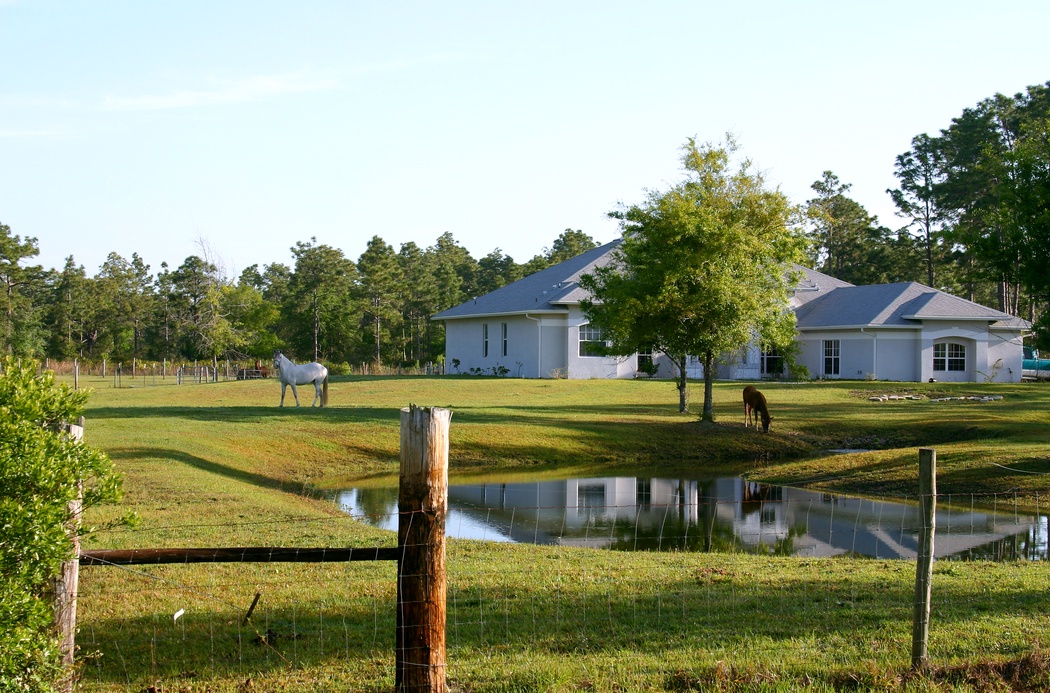Keeping your horse farm in tip-top shape is a constant work in progress. But by devoting time to take care of your horse property, you help improve its condition and ensure that it’s clean and healthy for you and your horses.
We’ve culled a convenient checklist for you to refer to any time you do your routine horse farm inspection.
Barns and corrals
- Sweep barn aisles daily.
- Check the electrical wiring for rodent damage and general signs of aging wear, and. Upgrade outlets if needed.
- Clear cobwebs from barn ceilings.
- Install birdhouses to attract birds that will help reduce the bug population.
- Level pathways for the rainy season by adding gravel or other well-draining material.
- Make sure feeding containers are tightly sealed from rodents and other pests.
Water and feeding troughs
- Ensure that the water troughs are located in well-draining areas to prevent accumulation.
- Check for leaks.
- Check plumbing for signs of wear and tear or any aging issues. Repair immediately if needed.
- Prevent the build-up of toxic algae by cleaning water troughs frequently; during summer, clean water and feeding troughs weekly.
- Fortify the ground around water troughs with gravel or other compact material.
Pasture and grazing
- Observe and implement rotational grazing on pastureland.
- Fertilize at least twice a year to revive exhausted pasture.
- Remove debris, loose rocks, or fallen tree branches.
- Carve out a mud lot (also called a “sacrifice area”) to protect your pasture during the rainy season.
- Trim uneven patches so that the pasture is of an even height.
- Prevent horses from grazing on frozen pastures to prevent root damage to the grass.
Manure management
- Divert water flow away from manure storage.
- Install rain gutters in the stables.
- Unless the manure is composted, do not use manure as fertilizer or soil bedding to prevent contamination.
- Cover manure piles.
- Use a harrow/drag to spread composted manure on empty pastures.
Fencing
- Keep horses from grazing on the riparian area (the zone between land and natural water source on your property).
- Check the tension on polymer rail fencing regularly.
- Cover chewable areas with heavy-wire mesh.
- Inspect for loose nails on wood fences and re-nail regularly.
- Check gate latches and fence lines for rust and wear and tear.
Make your horse property last
Prevention is better than cure. We live by this adage when it comes to horse properties. Regular maintenance ensures your horse property can be enjoyed for years to come. Moreover, it prevents you from incurring significant costs and losses when problems that could’ve been addressed by regular maintenance are left to worsen.
Are you ready to invest in North Texas real estate and maintain your own horse property? You’re in the right place. The best equestrian communities are found in North Texas. Sarah Boyd & Company will be thrilled to talk to you about the kind of property that best suits your plans.
With our active involvement in the local equestrian industry, we can point you to the perfect horse property in North Texas.
Let’s talk. Contact me, Sarah Boyd, at 214.649.4403 or send us an email at Sarah(at)SarahBoydRealty(dotted)com.

